Provider Pulse - August 2025
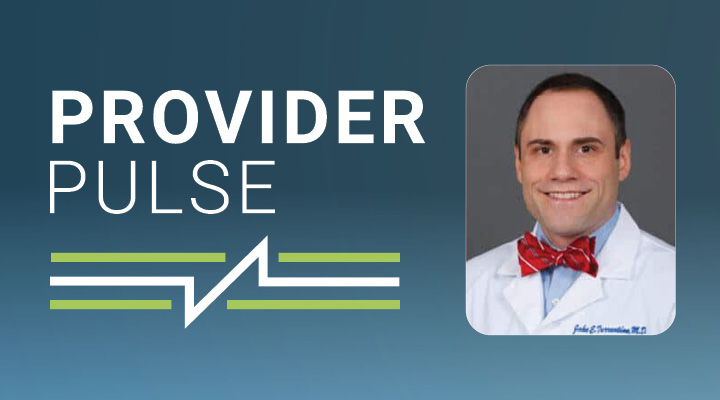 Dear Colleagues,
Dear Colleagues,I hope everyone is enjoying the summer. Following the last Provider Pulse, I wanted to share a few updates from the Executive Leadership Team. We continue working to improve QDP and our affiliated practices with the goal of becoming the premier skin care company in the nation. While it is impossible to share every initiative we’re tackling on a weekly basis, a few highlights include:
- The marketing team is developing enhanced campaigns tailored to individual markets, utilizing a wide range of strategies to optimize referrals to our providers.
- The finance team is building an improved Provider Report that will include more detailed data on collections, accounts receivable, and other key metrics.
- In several markets, we are testing or piloting AI-assisted tools to streamline our services, including AI phone agents, EMA AI-scribe, and a platform called Bonsai which identifies patients who have not been seen in a while to help bring them back into clinic. As we fine-tune these pilots, we hope to expand them across more QDP practices to improve our processes.
- Several providers have volunteered for our formulary review committee to evaluate our supplies such as gowns and gloves, to help us source clinically high-quality supplies at reasonable prices through group purchasing options.
I sincerely appreciate all the providers who have emailed me or worked with me to help solve challenges as our company grows. I am grateful to be part of such a dedicated group of providers who have remained steady, willing to show up and support QDP, your teams, and your patients. That consistency matters more than most people realize, and it’s what will raise QDP to the next level.
Please always feel free to reach out (Jake.Turrentine@qualderm.com) if you have any questions or concerns. Your voice makes a real difference.
Sincerely,Jake E. Turrentine, MD

Clinical Corner
Best Practice for Follow-Up Skin Examinations
This month’s topic is best practice for follow-up skin examinations to detect skin cancer. While routine provider-performed skin cancer screening is not universally recommended for asymptomatic adults without risk factors, there are numerous risk factors that should influence the decision to schedule a skin cancer screening or follow-up examination based on a large body of medical literature.
You should consider a follow-up skin examination at least annually in adults with any of the following risk factors: personal or family history of skin cancer, multiple atypical nevi or dysplastic nevi, history of actinic keratosis or extensive sun damage, fair skin, red/blonde hair, numerous moles, history of severe sunburns, or immunosuppression (e.g., organ transplant recipients).
More frequent examinations should be performed in certain patient populations. For example, patients with staged melanoma may need to be seen every 3 to 6 months for several years (frequency varies based on initial staging) before decreasing exam frequency to annual. Patients with a recent basal cell or squamous cell carcinoma should be seen every 6 months for several years and may transition to annual exams after remaining lesion-free for several years.
Importantly, patients who are developing multiple or frequent BCCs or SCCs (particularly if they are also immunosuppressed or high risk due to an underlying condition or syndrome) should be seen even more frequently, as often as every 2-3 months.
A more detailed and referenced summary of recommendations can be found here:
Coding Corner
Common Issues with Compass Coding Reviews
In this section of the Provider Pulse, I want to share some common issues that arise during the Compass Coding Reviews and hopefully provide some insight to help you improve your coding compliance.
This month’s focus is the importance of documenting the status of a problem and the presenting problem complexity in EMA, so that the code is assigned properly within the system.
During reviews, Compass Coding Consultants often find that a provider selects only the status (e.g., uncontrolled, worsening, not at treatment goal, stable) without changing the presenting problem complexity (e.g., stable chronic problem vs. chronic illness with exacerbation, progression, or side effects of therapy).
EMA assigns codes based on the presenting problem complexity, not the status, so when the status is changed without changing the complexity, it can result in improper coding of your visit.
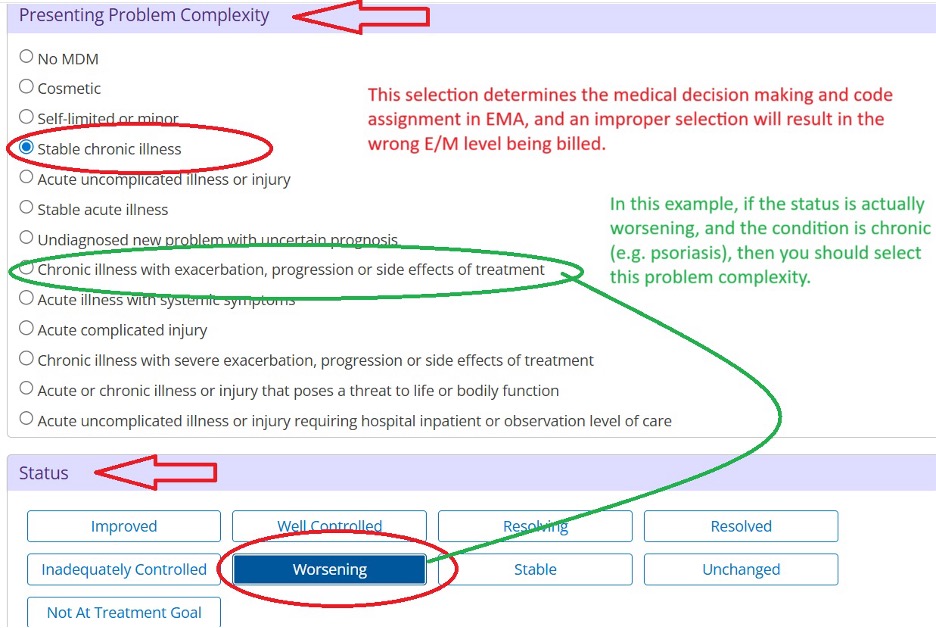
Note: The status of a problem cannot be inferred from the treatment plan (for instance, writing a prescription to control the disease does not automatically imply that the condition is flaring). Without documentation of status anywhere in the note, the condition is considered stable for purposes of problem complexity.
Our third-party consultants also recommend avoiding the status of “improved” if a problem is not yet at treatment goal, as that can cause confusion about the complexity of the problem.
Provider Recruitment
Help Us Grow Our Team
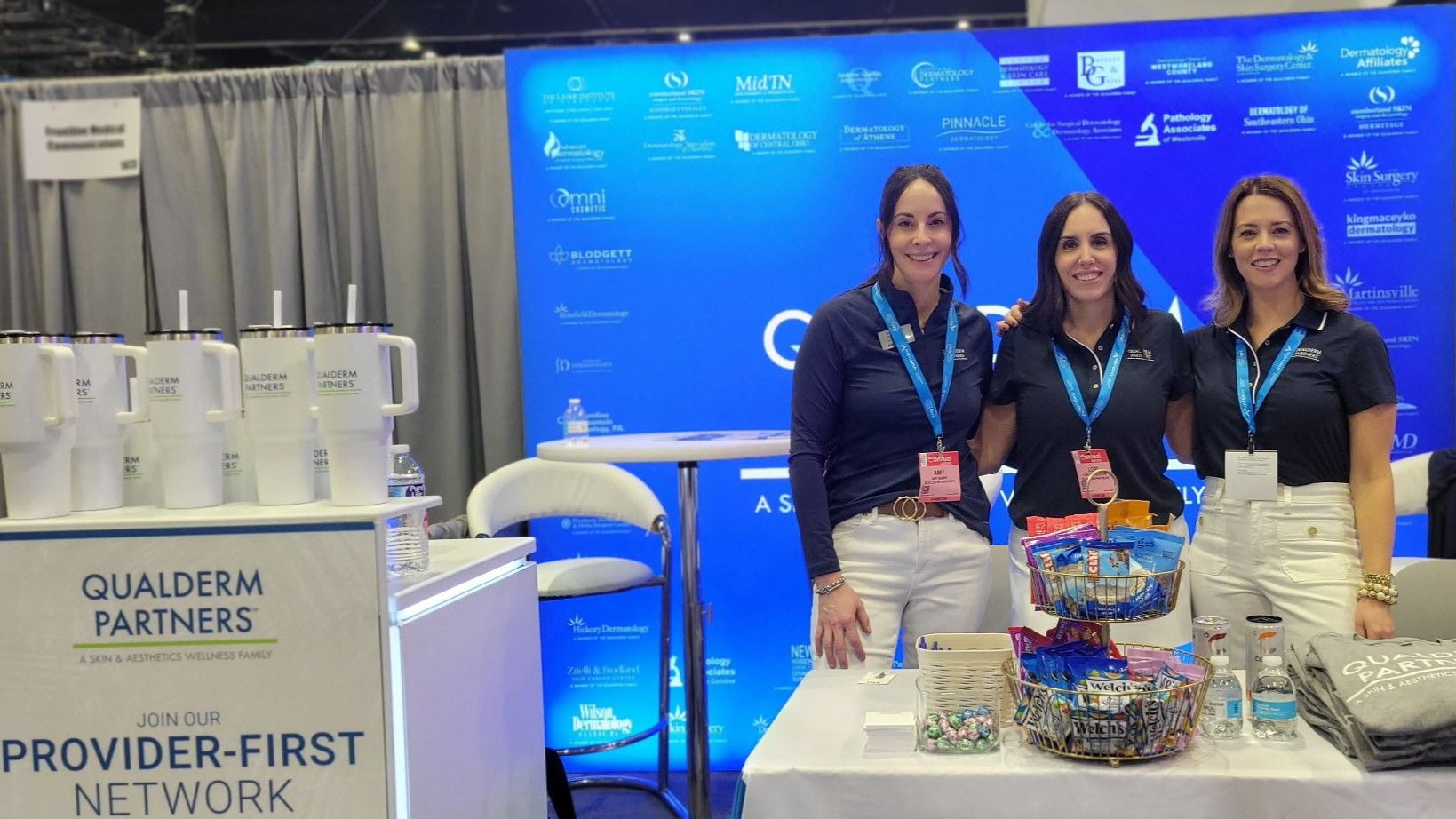 The best way for our company to recruit and retain high-quality providers is to bring in people who we know personally to join our team. We have a wide range of openings throughout our organization. Please remember we have a referral bonus program:
The best way for our company to recruit and retain high-quality providers is to bring in people who we know personally to join our team. We have a wide range of openings throughout our organization. Please remember we have a referral bonus program:
$10,000 if you refer an MD/DO
$7,000 for an APP with dermatology experience
$5,000 for an APP without prior dermatology experience
Thank you for helping us grow with great people.
Click here for more information about the referral bonus program.
Provider Achievements
As discussed last month, we would like to celebrate our peers’ achievements. To facilitate gathering information about what accomplishments to celebrate, we have created a link where you can report your own or someone else’s recent achievements:
Compliance Update
MIPS
MIPS: While we continue to perform better than last year on MIPS Quality Scores, we can do better. Our scores have plateaued over the last month. Please focus on the key measures that we are tracking this year, and work with your teams to correct any missed MIPS measures, such as tobacco cessation counseling, advanced care plans, and vaccine history of patients who are 13 (or turning 13) in 2025.
Please review each visit that you finalize and try to confirm that your medical assistants have captured that data. Also, remember to get itch scores on your patients with atopic dermatitis and psoriasis so that we can demonstrate the value of our care.
New CLIA Requirements for Laboratory Directors
Last month, I sent information about new requirements for lab directors of high-complexity (Mohs) labs. Since then, the AAD has announced a significant advocacy win which addresses many of the concerns raised by the new requirements.
Officially, the CLIA rule has not changed, but CMS has announced Enforcement Discretion.
While there are many specific elements to this announcement, two key wins for Mohs surgeons are:
1) The ability to take on a new lab directorship without doing 20 hours of additional CME; and
2) The ability for a recent graduate from Mohs fellowship to immediately take on directorship of a high-complexity lab without 20 hours of additional CME related to lab directorship.
Please note that documented site visits every 6 months are still required for moderate (non-PPM) and high-complexity lab directors.
Opportunities
QualDerm Helping Hand
QualDerm Helping Hand is a Teammate Assistance Program established to help our employees support each other. Since Helping Hand’s inception in late 2020, it has helped 145 teammates, with cumulative grants totaling nearly $145,000. Assistance has been provided to help with funeral expenses, family crises, caring for loved ones, and unexpected income loss within teammate families. The Helping Hand program is completely funded by teammates, for teammates. The program is simple: teammates can make a one-time donation, or they can designate a recurring donation of $1.00 or more to automatically deducted from their bi-weekly paycheck. All donations are tax-deductible, and the money is used to help qualifying teammates through Helping Hand grants. For more information about the program, and for the payroll authorization program, please click the button below. Please also feel free to reach out to Casey Parker or Marcia Topiwala with any questions.
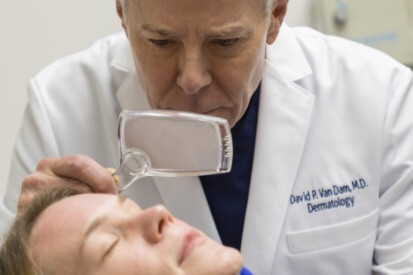
Grand Rounds
Grand Rounds is an excellent opportunity for us to collaborate, share compelling cases, and earn CME credit. Our next Grand Rounds is scheduled for August 12, 2025, at 8:00 PM EST. CME credit is offered if enough cases (4-5) are submitted in advance of the meeting.
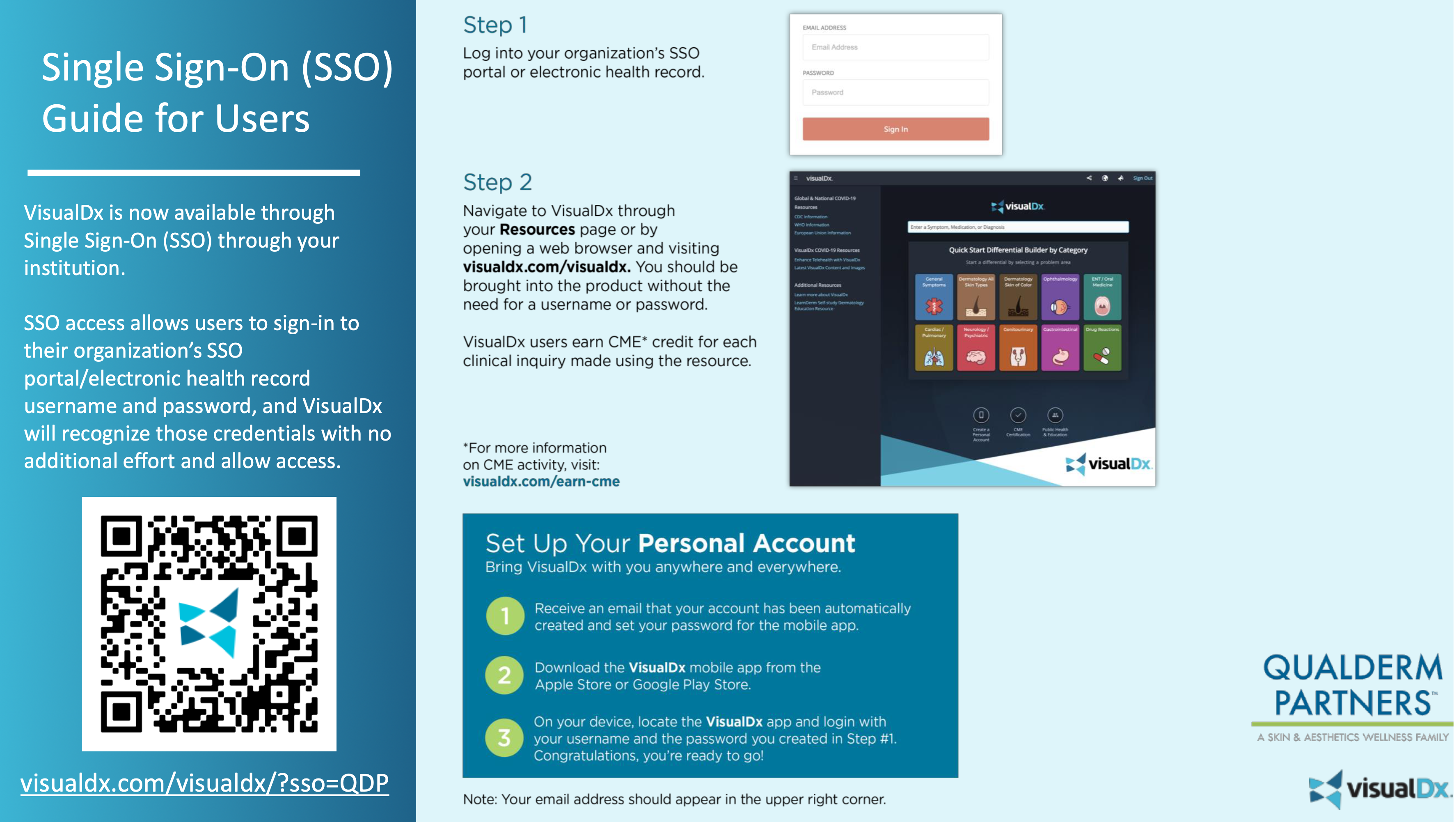
VisualDx Access
All providers have paid access to VisualDx through QualDerm. This platform can assist with diagnosis and patient education. Whether you need help forming a differential diagnosis or you just want to share condition-specific information with a patient, this is an excellent resource. VisualDx even offers patient education materials in Spanish for most diagnoses! Please click here for instructions to log in with your QualDerm credentials:
“The best way to find yourself is to lose yourself in the service of others.” - Mahatma Gandhi

